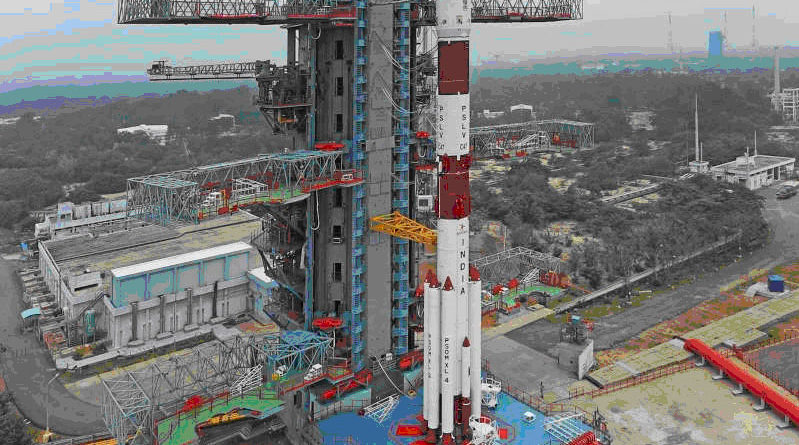ISRO Launches Cartosat-3 And 13 US Satellites In 27 Minutes
27 November 2019
- The Indian Space Research Organisation (ISRO) just launched 14 satellites into space in 27 minutes.
- This includes the Cartosat-3 satellite, which will add to India’s earth observation capabilities.
- The massive 44.4-meter tall rocket with a lift-off mass of 321 tonnes, took off from the Second Launch Pad at the Satish Dhawan Space Center in Sriharikota at 9:28 am.
India just launched its new earth observation satellite, Cartosat-3, and 13 US satellites into Earth’s orbit in just under 27 minutes.
ISRO successfully launches PSLV-C47 carrying Cartosat-3 and 13 nanosatellites from Sriharikota
“Cartosat-3 is the Highest resolution civilian Indian spacecraft. It is also the most complex and advanced earth observation satellite that ISRO has built so far,” said ISRO chairman K Sivan after the launch.
The Indian Space Research Organisation (ISRO) assembled the PSLV-C47 rocket in 5 segments, each weighing 45 to 50 tonnes, before catapulting it into space from the Satish Dhawan Space Center in Sriharikota.
The massive 44.4-meter tall rocket with a lift-off mass of 321 tonnes, heaved took from the Second Launch Pad at 9:28 am.
At lift-off time, the weather was a little cloudy, wind speeds benign indicating good conditions for the launch, according to the ISRO announcer.
The Launch
The first stage of the launch was initiated as the first of the four engines, PS 1, was ignited.
At 37 kilometers of altitude, the four groundless rockets burnt out in 92 seconds and separated from the main vehicle.
After 113.2 seconds, the second stage of the launch was initiated at 115 kilometers. At 161.1 seconds the launch vehicle entered closed-loop guidance, which means that the vehicle was now deciding its future functions by comparing its current location to the target conditions.
At 267 seconds, the third stage was initiated and lasted 229 seconds. Before moving onto the fourth stage, the launch vehicle was given a coasting period of 115 seconds to achieve optimal ignition conditions.
At 17 minutes, the fourth stage was shut off and the mission director announced optimal orbital conditions were met.
A few seconds later, ISRO separated the Cartosat-3 satellite separated from the launch vehicle. Following which the MESHBED was launched into orbit.
All of the satellites needed to be placed in similar but different orbits. So a gap of around 3 minutes was given to ensure that they don’t enter the same orbit at the Cartosat-3 or fourth stage of the launch vehicle.
More About the Payloads
The third generation of Cartosat satellites, the Cartosat-3, is the ninth overall in the Carosat series. It weighs 1,625 kilograms and can click detailed images of up to 0.25 meters in resolution.
“The realisation of Carosat-3 has witnessed a totally new development in the advanced technological area across the board, in all the domains — right from the payload, the communications, the optical system, the sensors, and so on,” said P. Kunhikrishnan, Direction of URSC after the successful launch.
He added that the satellite is capable of very high data throughput. It is able to relay information back to Earth at speeds of 2.88 gigabits per second, a considerable improvement over its predecessor which only communicated at 6.40 megabits per second. The satellite also has terabits of solid state memory on-board.
Cartosat-3 serves a dual purpose. It can monitor land usage for urban planning, rural resources, and the weather — but it can also help surveil India’s borders. In the past, area of interest (AOI) images from the Cartosat-2C satellite were used to track terrorist threats along the line of control (LoC).
Twelve of the US satellites are earth observation FLOCK-4P nanosatellites and one is a MESHBED to test communications. These commercial satellites are being launched under an arrangement with New Space India Ltd (NSIL), the commercial arm of ISRO.
Courtesy: MSN news

